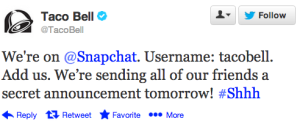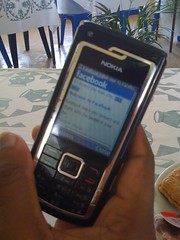Tweet

While I recommend this informative book, it left me thinking less about the need for companies to embrace mobile technology and more about how vital it is for them to empower people regardless of channel or technology. The book may have focused on mobile, but I think it says more about the customer mind shift than the mobile mind shift. Brands don't win by being great at mobile but by better serving the customer in every channel! [Tweet that]
Of course, consumers will continue to shift to tablets and smartphones for research and shopping, but a substantial portion of your customer base will not be giving up their PCs any time soon. Even when consumers do shift research and shopping preferences to mobile, brands must be careful with their assumptions about what this means. For instance, the same study found that when shopping on mobile devices, more people prefer a retailer’s full website (41%) than mobile websites (34%) or mobile apps (25%).
The mind shift your brand must make is not to be mobile but to be responsive to customers in every channel. [Tweet that] If your brand is shifting to mobile but ignoring users of PCs and those who prefer full websites, you are making a terrible mistake.
 |
 |
| Which of these data points is more vital to your brand? That consumers use apps more than the mobile web or that consumer do not use many apps? |
As you adopt more mobile practices, be careful not to misread the data; for example, too many brands today are racing to launch their own apps. This seems reasonable based on the data that shows apps dominate the mobile web. That's an interesting data point, but here is a better one to help mobile planning at your organization: While Nielsen has documented a substantial 65% increase in time spent with mobile apps over the past two years, the number of apps consumer use has changed very little. Nielsen reports that the average number of apps used per month grew from 23.2 to 26.8 in those same two years. In other words, consumers may be ever more addicted to their Facebook, Twitter, WhatsApp, Candy Crush and Instagram, but they are just not that interested in your app. Unless your customers have a compelling need to interact with your brand regularly while out and about (such as banking or paying with the Starbucks app), a mobile app may not be the best strategy.
The message seems clear: Yes, you need to "get" mobile, but you first need to "get" the customer. Embracing mobile at the expense of other channels is no less a mistake than ignoring mobile. Brands that succeed in the future won't be "mobile first;" they will be "customer first." [Tweet That] This means furnishing value in whatever channel customers wish (mobile web, mobile apps, traditional web, physical, social, email, wearable) and in whatever way consumers wish (meaning both the traditional ownership economy and, increasingly, the new collaborative economy, as well.)
There is a pervasive attitude in business nowadays that companies are not adjusting quickly enough to the adoption of smartphones. I agree that is a risk, but I don't think that is the biggest risk companies face today. After all, companies scrambled 15 years ago to adopt to consumers' Web mind shift, but many did so in the most vapid of ways, launching static websites and banner ad campaigns rather than changing how they conducted business in a digital world. While Borders used the web to market its physical stores and books, Amazon made buying and downloading books easier--Borders made a web mind shift, but Amazon made a customer mind shift.
If companies launch mobile mobile apps that merely cut and paste today's web functionality into an app, they should not be surprised when they fail. Sure, Sears can launch a mobile app so people can shop on their phone, but how many people are going to boot up a Sears app regularly? Compare that to Amazon's new Firefly feature on the Fire phone, which uses the phone's camera to identify products in the real world and instantaneously provide links to that product in the Amazon Marketplace. Retailers that simply offer traditional web shopping in an app are making a mobile mind shift, but that will do little to combat Amazon as it continues to lead the customer mind shift in retail.
The mobile mind shift demands that brands use mobile technology, but a customer mind shift may suggest other ways to win the customer. For example, Sears has spent the past decade cutting in-store staff to a bare minimum (or below) to try to keep costs in line with shrinking margins in bricks-and-mortar retail. (Sears head count per store is now less than half the industry average.) But think about the brands that are succeeding in physical retail--Restoration Hardware, HomeGoods, Kate Spade and Lane Bryant lead the market in sales per square foot growth, and they didn't achieve that by offering a poor customer experience.
Oh, and hey @Sears, aside from the terrible service & tardiness, they also left the fridge like this. Um, excuse me? pic.twitter.com/6je0RF5zwy
|
At Sears Eaton Centre lady's shoe disaster zone, Charlie Brown's Xmas song is playin & now I am soso sad. #xmasblues pic.twitter.com/trFqWkIlDb
|
A new mobile app may help physical retailers a bit, but it will take more than an iPhone and Android offering to stem Sear's bleeding. (Sears Holdings' market cap is down more than 80% in the last six years.) The only way for Sears to respond to a mobile mind shift of smartphones with showrooming apps is to provide a unique, differentiated, value-added experience in the physical space. Having the proper staff and offering digital in-store assistance is the way to keep people shopping and buying in the real world (where 94% of all retail still happens in the US!), which means Sears' most pressing need is not to make a mobile mind shift but a customer mind shift!
Explore more SHLD Data at Wikinvest
I am not arguing against the mobile mind shift, but hasn't the time come to stop worrying so much about channels and instead focus more on the customer? Tomorrow's customers will be more mobile, of course, but they will also be more social, more digital, more inclined to rent and share than to buy and own, more demanding that brands earn their trust and have higher expectations that brands will act proactively and in real-time to resolve problems.
Go ahead and launch your mobile app, but if you are counting on that to keep your brand relevant, I respectfully submit you will be deeply disappointed.





